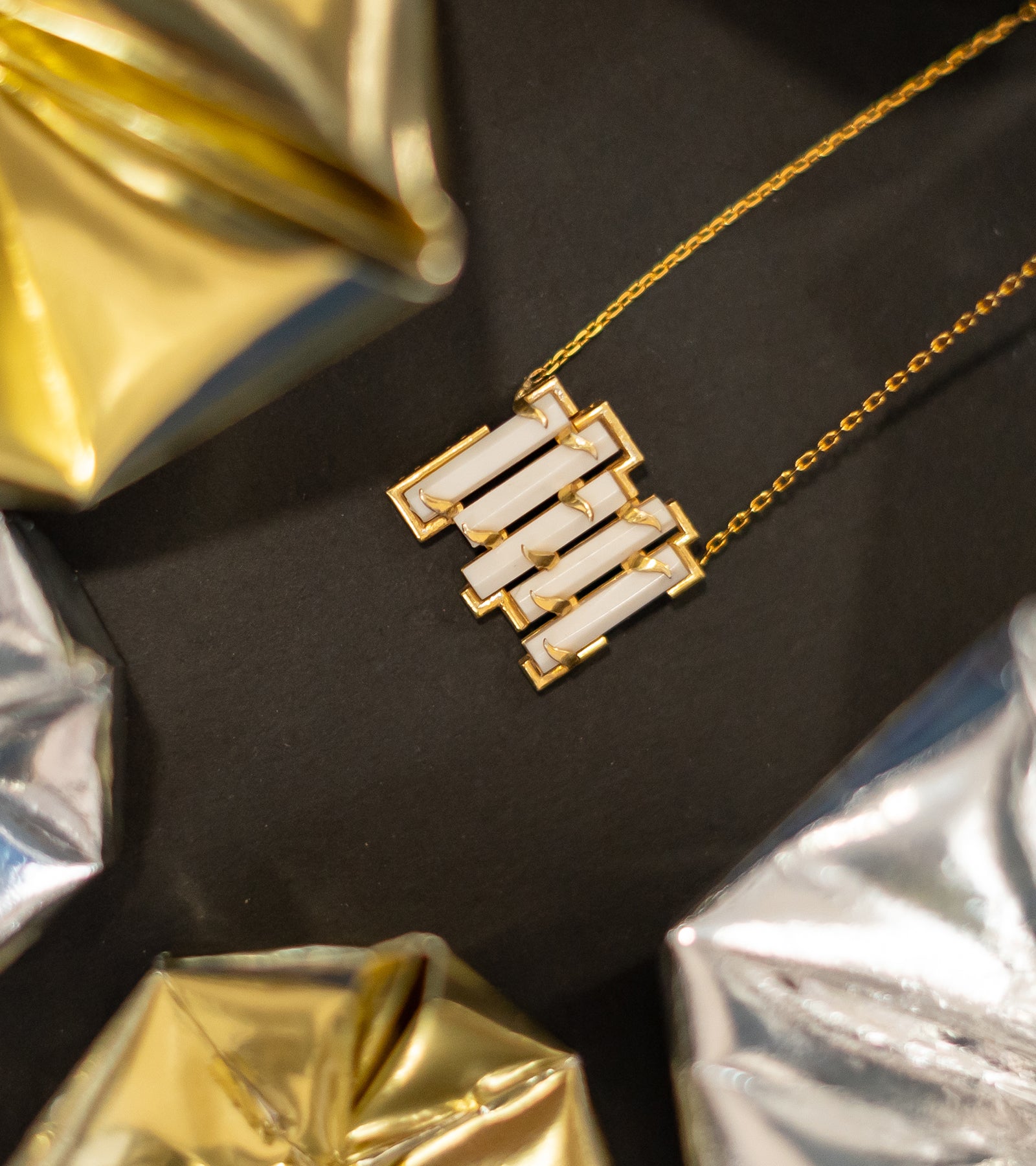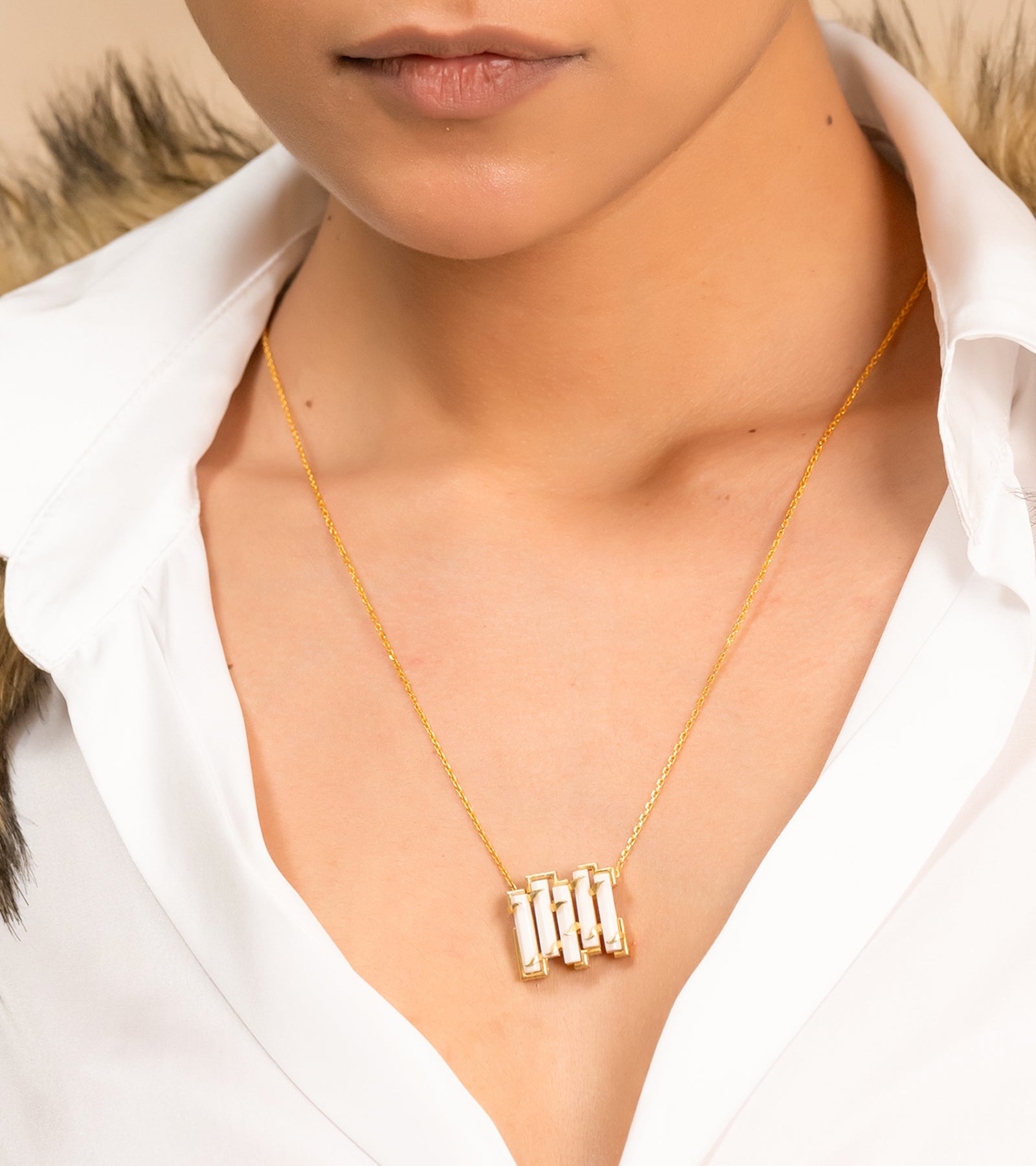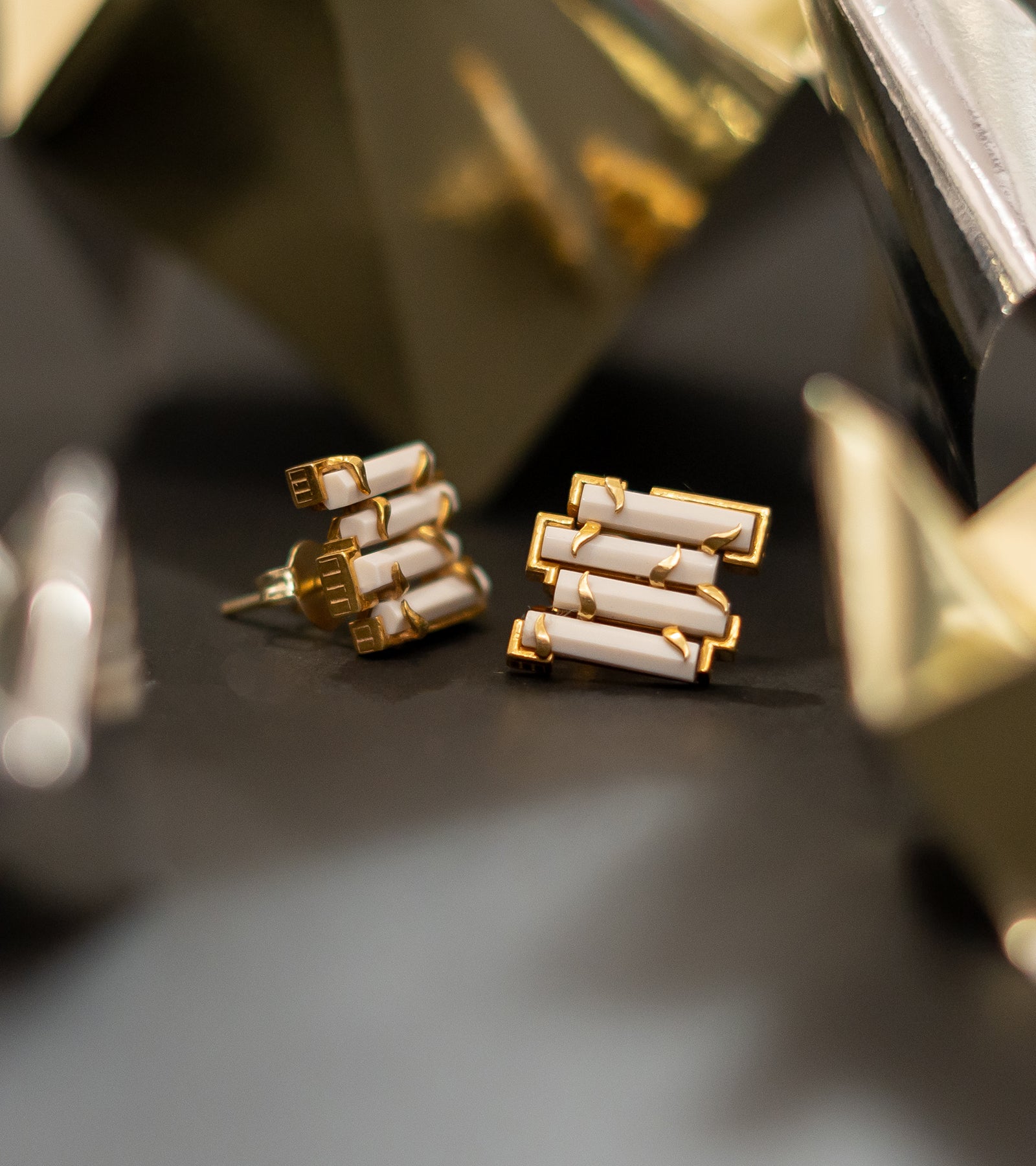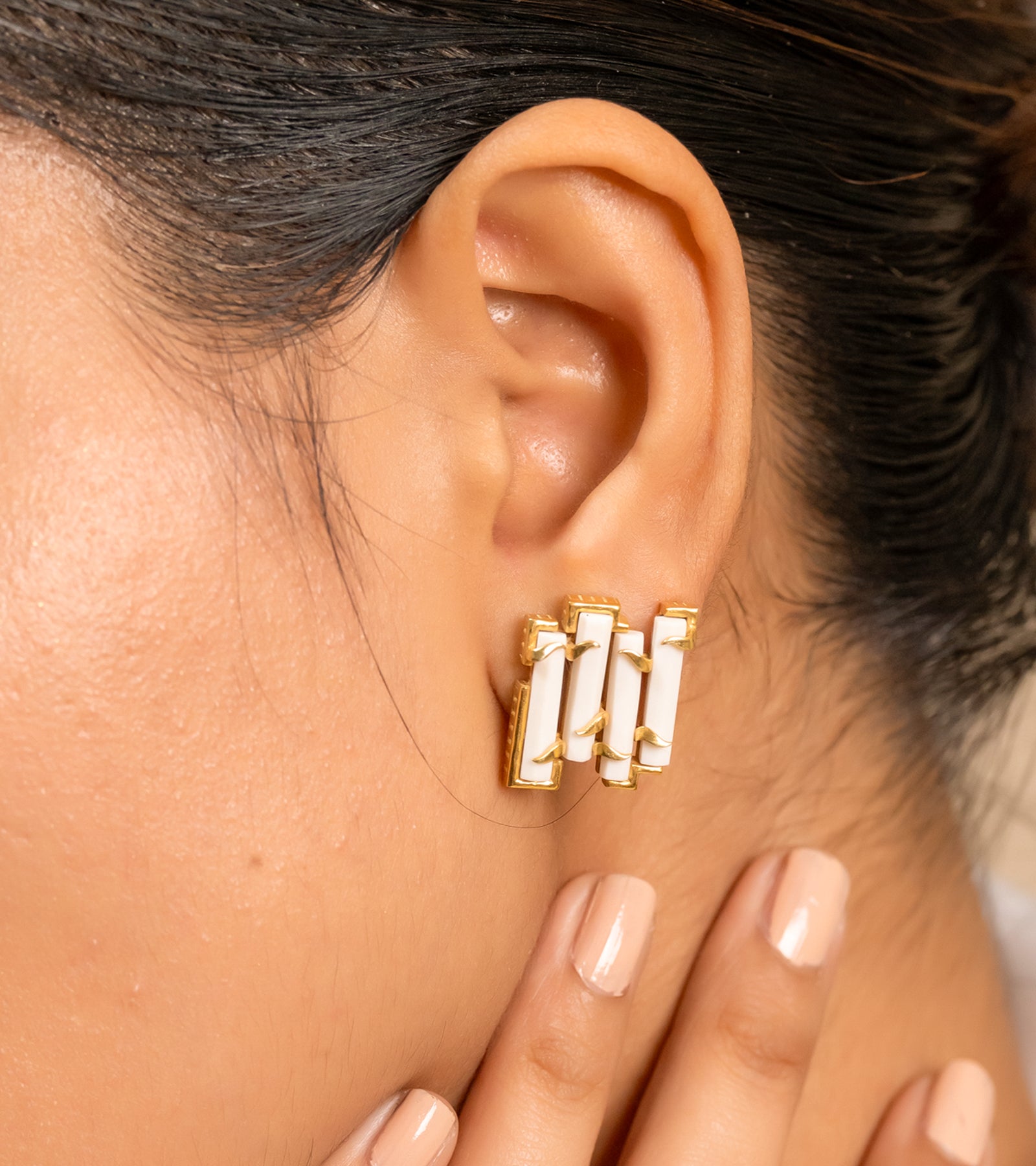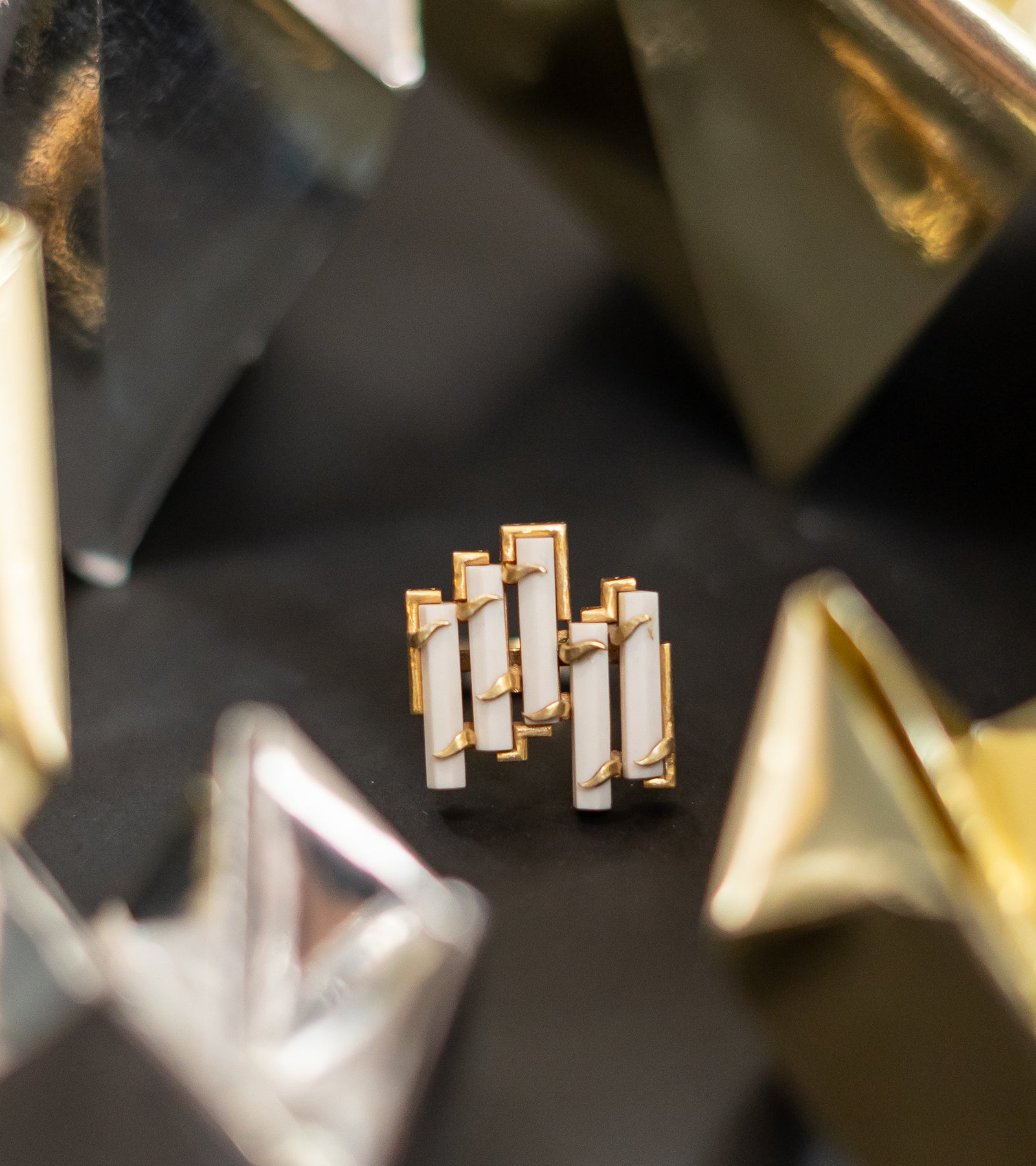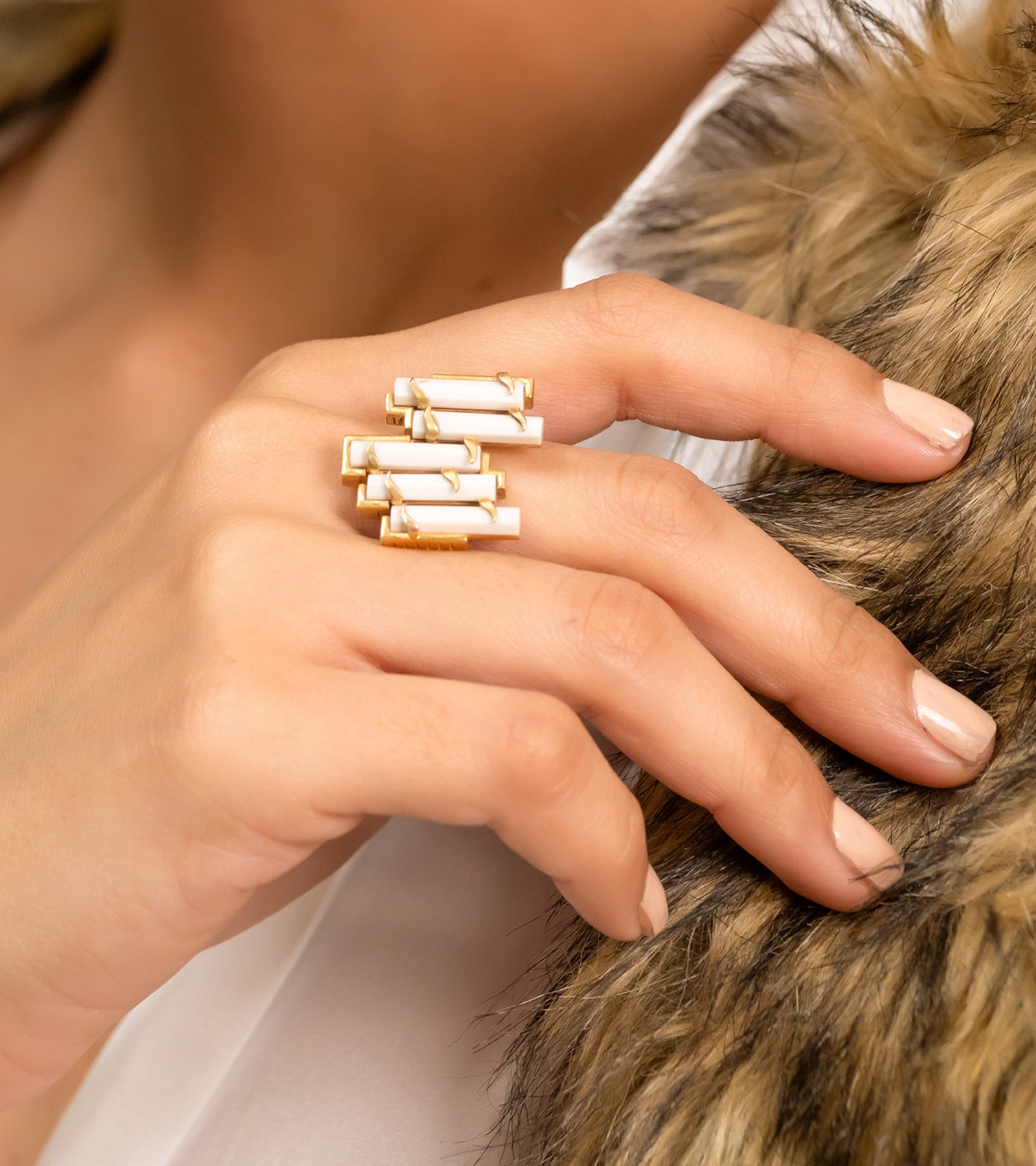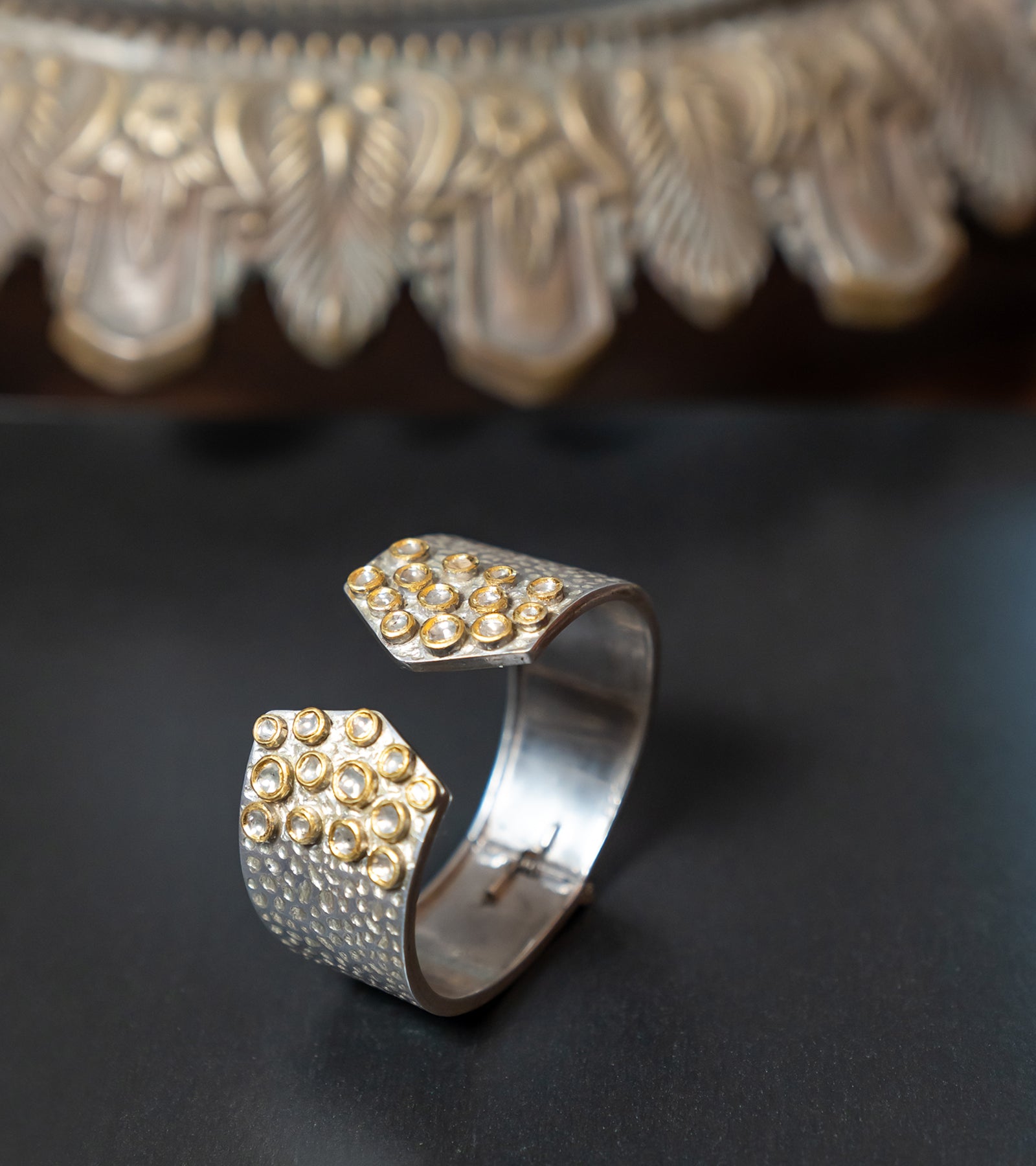Material Specification
ABOUT METALS
18 Karat Gold : 18K gold (750 Hallmarked) with 75% Good mixed with other Alloys. Is also appropriate for everyday-wear. With a higher percentage of Gold price for jewelry made in 18K may be higher as compared to 14K purity. Also 14K gold is stronger and holds the gemstones in place.
24 Karat Gold : 24k gold has 99.9% purity, is technically a gold foil as it is the purest and hence the most malleable. It is only used in our designs that use the kundan setting (see glossary).
Sterling Silver (925 Silver) : The extremely ductile 925 Sterling Silver is an alloy made of 92.5% pure silver and 7.5% copper.
ABOUT DIAMONDS
Brilliant-cut Diamond : A brilliant is a diamond or other gemstone cut in a particular form with numerous facets so as to have exceptional brilliance. The shape resembles that of a cone and provides maximized light return through the top of the diamond
Rose-cut Diamond : With anywhere from 3 to 24 facets, a Rose Cut Diamond resembles the shape of a rose bud. ... In general, they are flat at the bottom and creating a larger surface area for the stone's brilliance. One of the most striking characteristics of a Rose Cut Diamond is it's flat base.
Single Cut Diamond : Also called “Melee” diamonds, Diamonds that are cut as round brilliants but have fewer than the standard 57 or 58 of facets are referred to as “single cut” (also called “melee” diamonds). See: Selection of eye-clean diamonds vetted for quality. As a rule, single-cut diamonds will have only 17 or 18 facets
Baguette-cut : A baguette cut diamond is a step-cut diamond commonly used as a side stone or accent stone. Baguette diamonds are long and rectangular or tapered and feature 14 facets.
Marquise-cut Diamond : Marquise diamonds possess an elongated elliptical shape with pointed ends. A Marquise diamond typically has 58 facets. Due to their long and narrow shape, Marquise diamonds can create the illusion of greater size. Their elongated shape is also known to flatter the wearer by making the finger appear longer and slimmer.
Princess-cut Diamond : The princess cut (technical name 'square modified brilliant') is a diamond cut shape often used in engagement rings. The name dates back to the 1960s, while the princess cut as it exists was created by Betazel Ambar and Israel Itzkowitz in 1980
Champagne Diamond : A champagne diamond is a type of colored diamond that's naturally brown, with a noticeable yellow tint. They can range in hue from light brown to darker shades, resembling the color of champagne.
Sliced Diamond : Diamond slices are thinly sliced sections of large, rough diamonds characterized by their abundance of inclusions. Inclusions are small “imperfections” inside the diamond, and they are caused by extreme heat and pressure while they are formed deep within the earth.
Uncut Diamonds/Polki/Vilandi : A diamond that has few facets and appears to have little fire or brilliance. It refers to unpolished or rough diamonds. Polkis can be irregular in shape and are frequently used in the Indian setting technique of kundan.(which is essentially gold foil- see kundan in glossary)
ABOUT STONES
Aventurine : Aventurine is a form of quartz, characterised by its translucency and the presence of platy mineral inclusions that give a shimmering or glistening effect termed aventurescence
Glass-filled sapphire is a natural sapphire that has undergone treatment to enhance its clarity and color. This process involves filling surface-reaching fractures with lead glass or a similar substance to improve the stone’s transparency and overall appearance. While these sapphires are more affordable than untreated ones, they require extra care, as the filling can be sensitive to heat, acids, and ultrasonic cleaning.
Citrine : Citrine is a beautiful yellow gemstone with a color that ranges from light to dark. It is a member of the quartz family
Creative Green Sapphire : These are Lab made green sapphire.
Creative Tourmaline : These are Lab made tourmaline.
Emeralds : Part of the beryl family, these stunning green gemstones were created during an intensive tectonic process that brought together traces of chromium and vanadium with the normally colourless beryl. The earliest emeralds came from Zimbabwe and are among the oldest known gemstones in the world. Today, top-quality emeralds are mined in Colombia.
Emerald Doublet : A doublet is a gemstone that is composed of two parts; usually a valuable gemstone material at the crown(top) and a less expensive material (synthetic sapphire, quartz or glass) in the pavilion(bottom).
Garnet: Garnet stone is a semi-precious gemstone available in varieties of colours. It is a birthstone of January, and best known for its healing properties.
Hessonite : Hessonite is a brownish-yellow variety of garnet.
Labradorite : Labradorite is a member of the Feldspar family and is treasured for its remarkable play of color, known as labradorescence. The stone, usually gray-green, dark gray, black or grayish-white, is composed in aggregate layers that refract light as iridescent flashes of peacock blue, gold, pale green, or coppery red
Moissanite : Moissanite is a diamond simulant made of silicon carbide.
Nano Amethyst (gem) : Nanogems are the glass-ceramic material with nano sized (10⁻⁹m) crystals of Spinel in an aluminosilicate glass matrix, which is not special glass and it is not synthetic crystal or mineral – it is their hybrid. They are available in more than 220 colors and shades: Emerald, Sapphire, Ruby, Garnet, Topaz, Aquamarine, Amethyst, Morganite, Kunzite, Peridot, Tsavorite, Rubellite, Red and Black Spinel, Turquoise and many others.
Natural Crystal : Naturally occurring crystals.
Onyx : ONYX gemstone is a type of Chalcedony which has parallel banded layers. The colors of the bands may range from white to many other shades like black, blue, green, red, red-orange, orange, honey etc.
Rose Quartz : A pink variety of quartz, Rose Quartz is a popular jewelry gemstone and is also known as Love Stone or Bohemian Ruby. The color of this gemstone may range from very pale pink to deep reddish-pink
Glass-filled rubies are natural rubies that have undergone a treatment where fractures and cavities are filled with lead glass or similar materials to enhance clarity and color. This process significantly improves the stone’s appearance, making it more affordable than untreated rubies. However, glass-filled rubies are more delicate and require careful handling, as the filling can be damaged by heat, acids, and ultrasonic cleaning.
Rutile Quartz : Rutilated Quartz is clear quartz or smoky quartz with hair-like inclusions of the mineral rutile. The hairs are usually golden colored, but can also be silver, copper, or black.
Serpentine : Serpentine is a group of minerals that are usually green in color. It is used as gemstone, architectural stone, carving material and source of asbestos
Simulated Ivory : A man-made gemstone created with a compound of minerals to make which looks and feels like Ivory.
Tanzanite : Tanzanite is the blue and violet variety of the mineral zoisite (a calcium aluminium hydroxyl sorosilicate), caused by small amounts of vanadium. Tanzanite belongs to the epidote mineral group.
Topaz : Topaz in its natural state is a golden brown to yellow – a characteristic which means it is sometimes confused with citrine, a less valuable gemstone. A variety of impurities and treatments may make topaz wine red, pale gray, reddish-orange, pale green, or pink (rare), and opaque to translucent/transparent.
Tourmaline : Tourmaline is a silicate mineral. It is found all over the world and comes in a variety of colors including shades of red, pink, yellow, black, green, and blue.
Translucent Green Amethyst: Green Amethyst or Prasiolite is a light green-colored, transparent, semi-precious gemstone of Quartz mineral family. It is considered a highly effective healing gemstone and is also worn to gain spiritual serenity, better communication skills, higher self-esteem and a healthy body.
Turquoise : An opaque greenish-blue mineral. It often has veins of darker or lighter material running through.
Yellow Sapphire : Yellow sapphire is the yellow variety of sapphire, a very hard stone consisting of the mineral corundum. Ruby is also a variety of corundum.
ABOUT PEARLS
South Sea Pearls : South Sea Pearls are very rare and unique. Given the rarity of the oyster, cultivation and production costs remain extremely high. Also the reason why South Sea Pearls are among the most expensive pearls. South-sea pearls have naturally occuring imperfections and indentations. Pearls may have surface damage, imperfections, cracks or chips in their nacre.
Mother of Pearl : Also known as nacre, mother-of-pearl is the iridescent layer that forms inside the lining of many molluscs, including pearl oysters and abalone. It comes in many natural colours but is often bleached or dyed. We have also used a colored mother of pearl.
Cultured Pearls : These pearls are created by a mussel farmer or oyster farmer under controlled conditions.
Chinese Button Pearls : Chinese button pearls are symmetrical button-like pearls that appear to be flattened or squashed to some degree.
Freshwater Pearls : Freshwater pearls come from freshwater mussels. Freshwater pearls come in an amazing variety of shapes and colours.
Shell Pearls : Shell Pearls are synthetic pearls.


